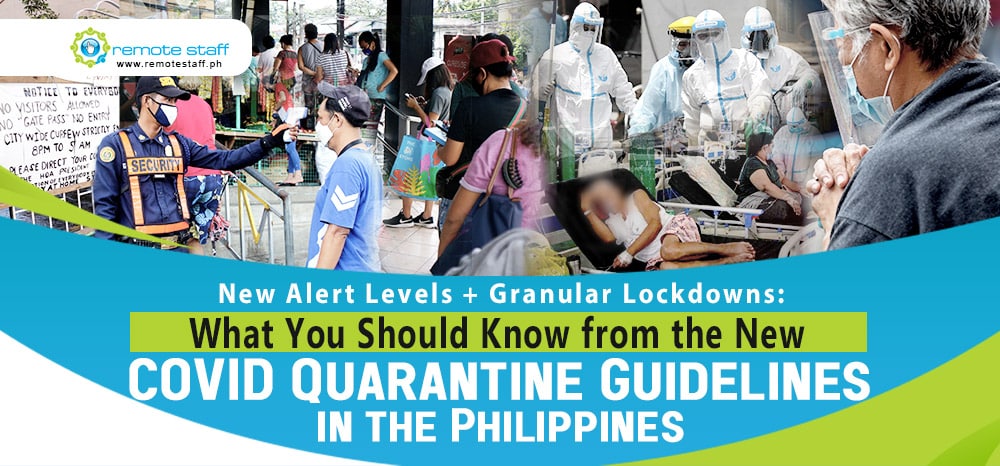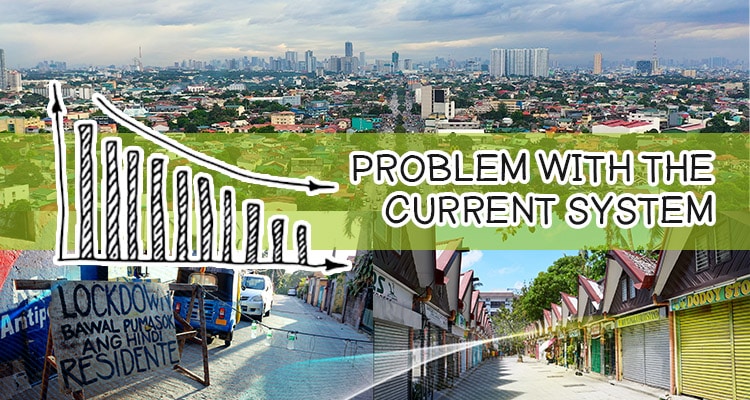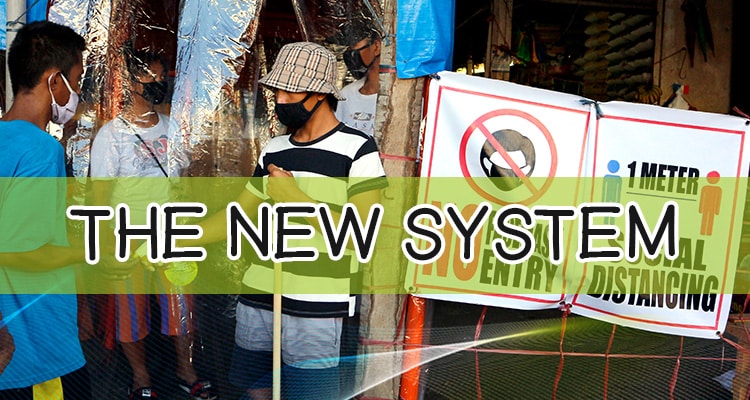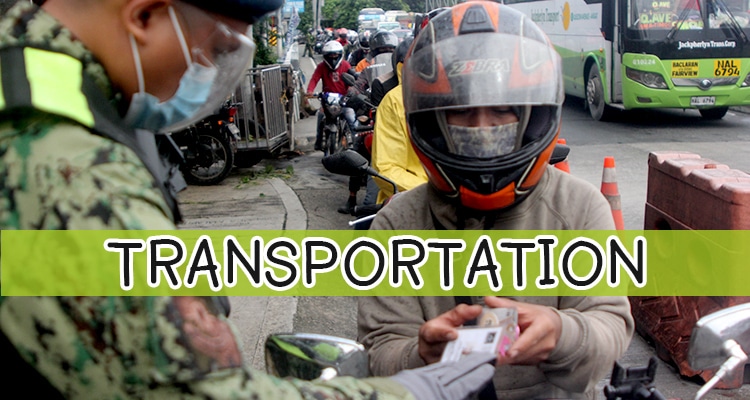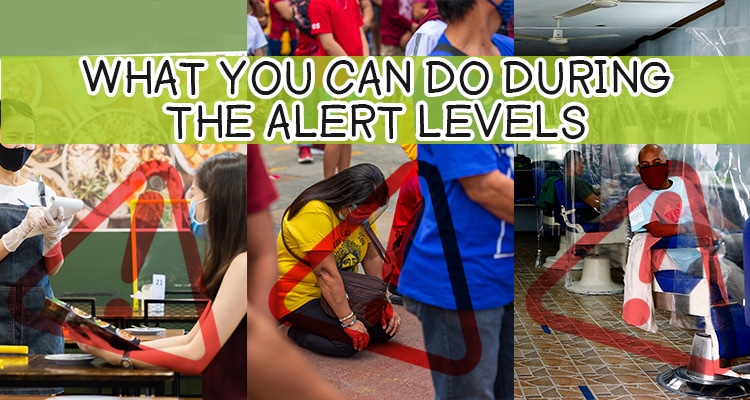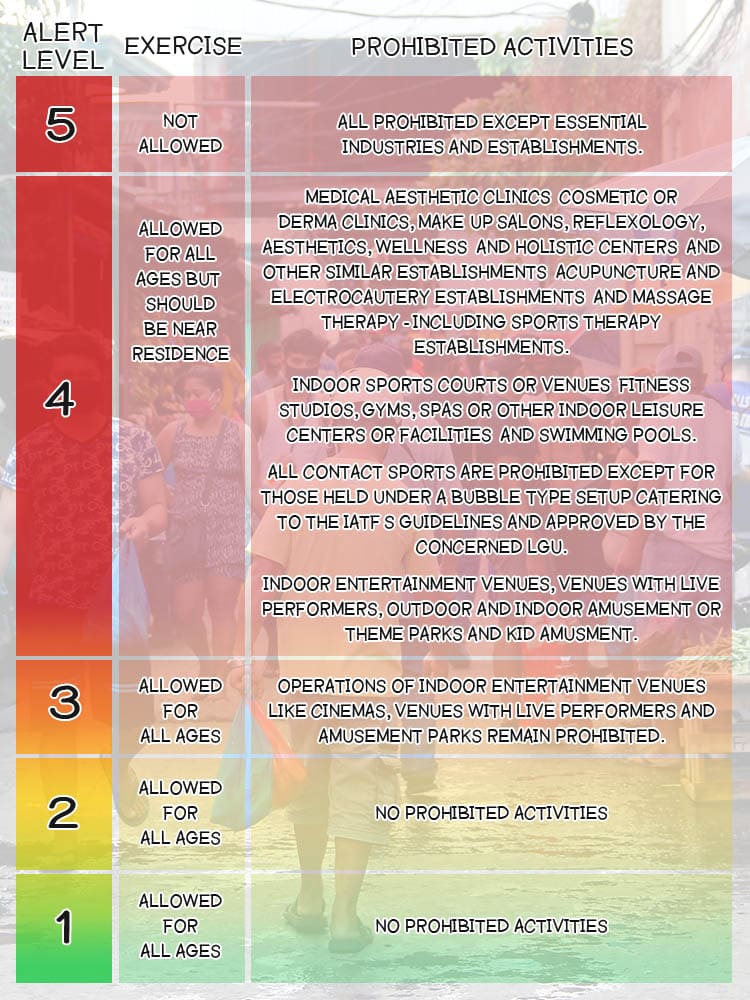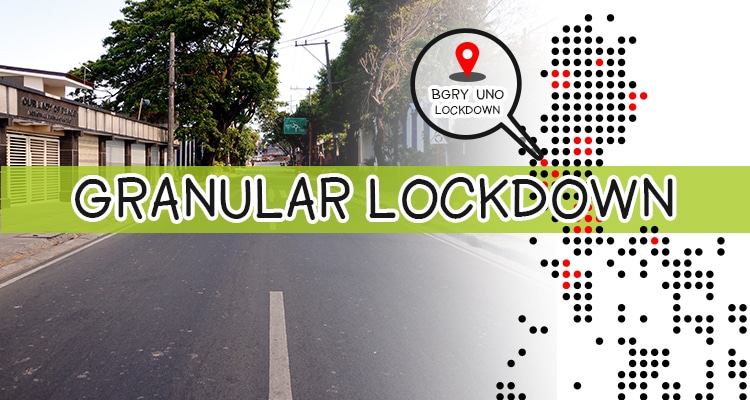As of writing, daily spikes of COVID cases range from 18,000 to 22,000 a day! The current system is struggling in controlling the virus from spreading.
The closest way to battle it is through vaccination. Right now, fully vaccinated individuals are at 17M and the total is at 40M when counting those with just 1 dose.
We’re getting there. But the battle is far from over. We need to delay the spread while vaccinating most Filipinos to achieve herd immunity.
With that, starting Sept 16, 2021, the Philippines will adopt a new Alert system plus granular lockdowns to hopefully contain the COVID outbreak. And here’s what you can expect.
Problem with the Current System
With the past ECQ, MECQ, GCQ classifications, the regional system will close down the whole area to contain the virus. Within that area, some are clearly high-risk but some are relatively safe. Safety first, right?
But this comes with a price. The lockdown areas will have limited economic activity despite being relatively safe. Imagine Quezon city with 1209 barangays closed down just because some barangays are at high risk.
It might be true that most areas in Metro Manila right now are at high risk. But when the outbreak subsides, the new proposed system will ease up economic restrictions on the safer areas.
The New Alert System
With the current system, regional classifications will only be two, ECQ and GCQ. The difference is, between the two, there are 5 Alert levels.
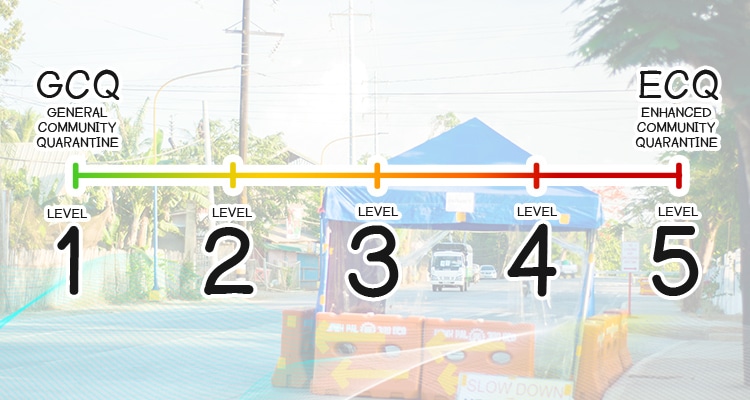
With the alert levels, there are varying degrees of activities you can do ranging from strictest to less. Alert levels will be based on:
- Case transmission rates
- Hospital bed utilization rates
- Intensive care unit utilization rates
So think about it as GCQ with 4 alert levels, depending on the number of new cases and how pressured the healthcare system in the area is places. And when the alert level reaches 5, the ECQ guidelines will be followed.
Who Can Go Out Based on Age
For the new system, who can go out is similar to the previous scheme.
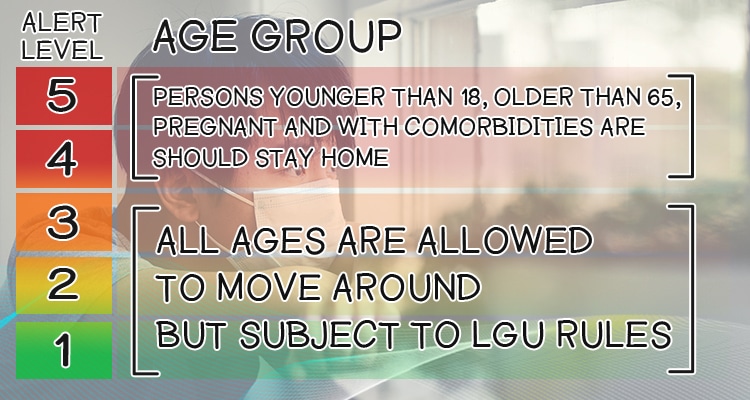
But there’s more leeway for lower alert levels.
Transportation
Regardless of Alert levels, the transportation sector will operate at 100%.
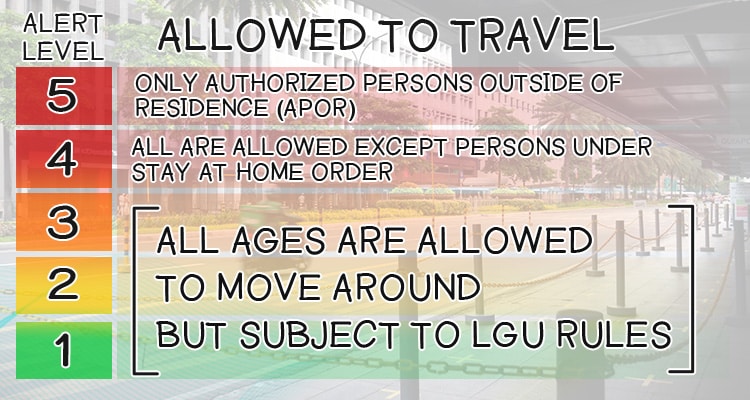
The only difference is there will be restrictions in movement during Alert level 5 like the restrictions for Consumer APOR and Working APOR. With this, the ECQ guidelines will be followed.
What You Can Do During the Alert Levels
So what can you do for each alert level? First, we must understand the 3 Cs establishments. The 3 C’s are the high-risk businesses for covid transmission.
- Closed or Indoor (like indoor gyms, restaurants
- Crowded (like conferences, parties, religious gatherings)
- Closed Contact (like spas and salons)
And only these businesses will change in capacity during the different alert levels. Businesses can also have an increased allowable capacity by 10% if they have a safety seal.
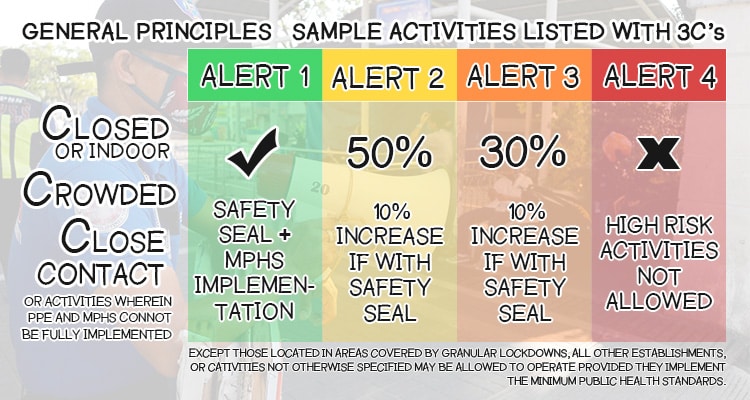
Businesses outside the 3C’s will remain fully operational regardless of alert level except during alert level 5.
Allowed Activities
As for activities, here is the list of prohibited activities per the alert level.
Most prohibited activities are similar to the previous quarantine classifications. The difference is the additional leeway for indoor operations on level 3 and level 4.
Granular Lockdown
What if you’re region is on alert level 2, but there are high-risk areas still. Instead of closing down the whole region, the government will implement a granular lockdown for these areas.
It can be a barangay, a subdivision, a street, a building, or even just a house. These granular areas will be the only ones subject to stricter lockdown measures like:
- Stricter enforcement of mobility restrictions and health protocols
- Active case-finding including door-to-door visits
- Testing of contacts
Take note; most cities are doing granular lockdown. But the implementation of this scheme will be streamlined over the country as of date.
Conclusion
How’s the new alert levels for you? Is it clearer or is it still confusing like the previous one? Comment down below for your thoughts! Let’s all work together to survive the pandemic. Cheers!

